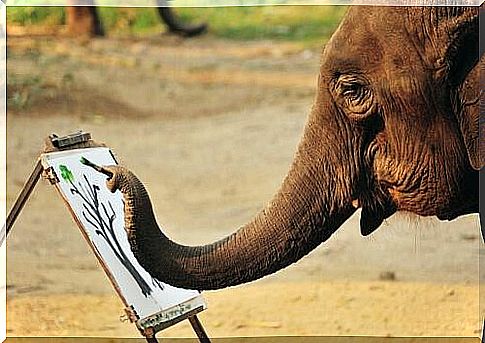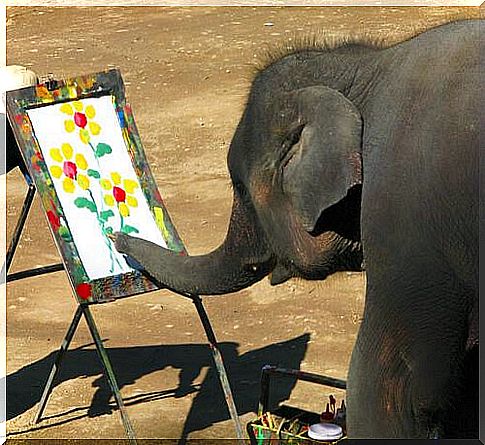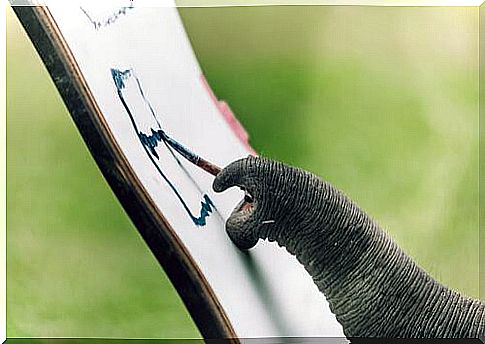Painting Elephants: Is That Cruelty To Animals?

Have you ever seen elephants painting ? This and other phenomena from the animal world impress people, but there can be a dark secret behind them.
Exploitation of animal intelligence
From animals that solve puzzles to animals that imitate human language, use tools and perform tricks: the intelligence of animals unleashes the human imagination.
Unfortunately, this has also led to these skills being harnessed for lucrative purposes: circus and actor animals are a good example of this, as is the use of fauna for tourism purposes.
Painting elephants: is that cruelty to animals?
Painting elephants are a good example . You may have seen videos in which the pachyderms paint pictures of flowers or elephants by holding the brush in their trunk and being instructed by a trainer.
Such painting elephants can be seen in some tourist areas of Thailand and although it looks like a demonstration of the elephants’ intelligence, the elephants may be brought to paint in a humiliating training session.
Usually these elephants are looked after by a mahout who even appears to be a loyal friend of the elephant. In fact, however, he mostly forces the animal to paint.

In order to learn to paint, the calves also have to be separated from their mothers. However, the social structure of elephant herds is very complex and reflects their diverse family ties and emotional intelligence.
Painting elephants: how do they learn?
The elephants are taught to paint by standing in front of canvases while they are accompanied by their mahout, who instructs them and gives them brushes and paint.
They paint the pictures together with their mahout, who is very close to the animal’s body. The painted picture is auctioned or sold and the elephant is rewarded with bananas or other food.
Unfortunately, this training is usually not animal-friendly: The trainers pull on the ears, even stab the elephants with sharp objects or attach elements to the trunk with which they can correct the animal.
In addition, each elephant has a picture that he paints over and over so that the elephant remembers the design so that if it makes mistakes, it does not suffer punishment and gets its reward.

Painting elephants: ethically correct?
You can of course train animals without mistreatment and many elephants are certainly taught to paint gently: with light touch, gentle commands and rewards, many trainers get their elephants to their destination well.
Unfortunately , this method requires significantly more dedication, training and also more empathy for elephants. An empathy that does not force the elephant to act for profit.
We therefore recommend that you do not organize or attend shows that make wild animals behave unnaturally: tigers jumping through fire rings, dancing bears or parrots riding bicycles are also part of wildlife exploitation.
We humans have to make sure that tourism is operated responsibly. Paying for these activities can turn us into the worst calamity that befell these elephants









